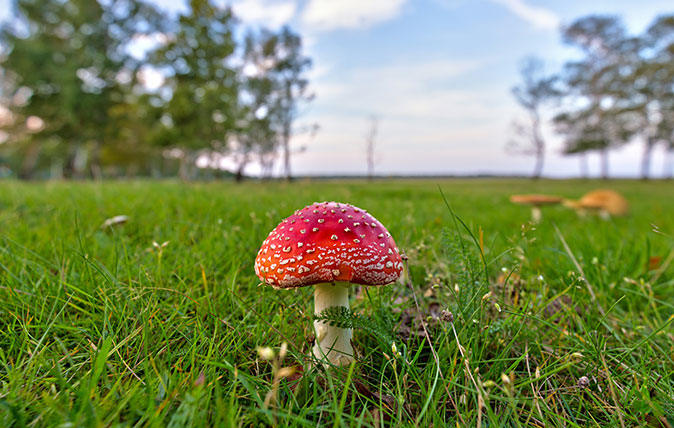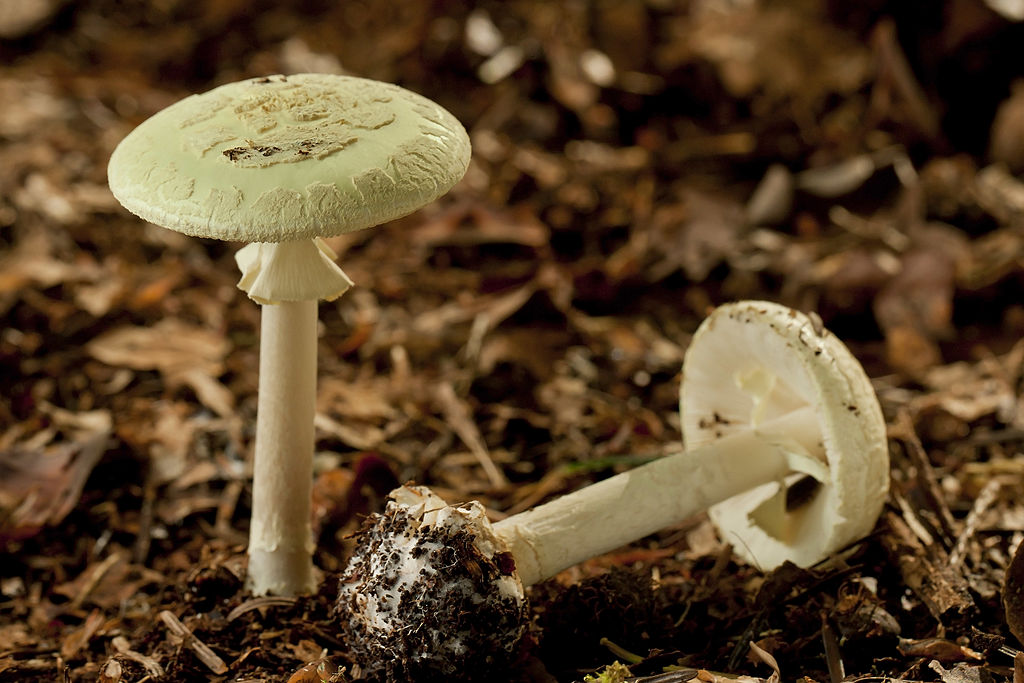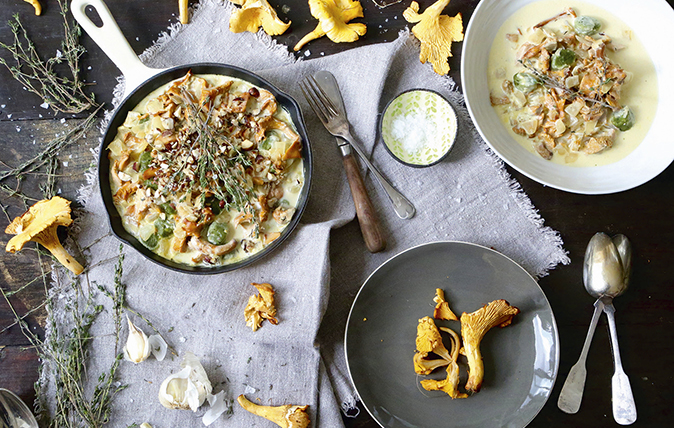Wild mushrooms: Picking the good, avoiding the bad... and steering clear of the hallucinogenic
Lesley Geddes-Brown delights in wild mushrooms – and just wishes it was easier for British mushroom lovers to get hold of them


At this time of year, one of my greatest pleasures is to visit a good market where the stalls are piled with just-harvested vegetables. This is especially the case in Italy, where, given pride of place at the front of the stall, there is generally a large basket full of porcini. This, of course, is the wild mushroom par excellence. With a scent like no other, it’s the perfect autumn fruit.
I’ve just had a delivery of frozen wild mushrooms. The porcini have been picked in Poland, the chanterelles in Lithuania and the morels in Turkey. I’ve had to have them frozen because, unique among market stalls in Europe, Britain rarely offers any freshly picked wild mushrooms. The supermarkets don’t either.
The British seem to have a completely different attitude to native wild mushrooms. For a start, we tend to call them toadstools, which is hardly conducive to a lip-licking meal.
And then we have this strange refusal to pick them. The New Forest seems to be among those bodies that’s trying hard to stop its toadstools from being picked – although it’s had to give in to a few families foraging for themselves. Last year, the Forestry Commission said picking mushrooms was illegal, but it’s been reduced to pleading that people should only forage for their personal use and pick no more than 3½lb.
The New Forest verderers who look after the forest particularly rail at ‘Eastern Europe gangs’ who pick mob-handed for, ghastly thought, commercial gain. Picking for trade is still banned because the area is an SSSI. The Fungus Conservation Trust adds that ‘the harm done to the countryside every autumn has been awful’.
Compare and contrast this with the description of foraging for wild mushrooms in Emiko Davies’s new book, Acquacotta. She writes of Umberto, who searches the ground of Monte Argentario, a rocky peninsula on the coast of Tuscany, where, he says, the porcini taste better than on the real mainland: ‘He doesn’t have to go far to find them; they are everywhere if you know how and where to look for them.’ He even comes back from taking his young daughter to pre-school with a fragrantly filled bag for supper.
Of course, there are risks. Some are hallucinogenic (including the devastatingly pretty Amanita muscaria, or fly agaric, pictured at the top of this page) while several wild mushrooms are astonishingly poisonous – notably the death cap and the destroying angel. Both can be fatal.
Exquisite houses, the beauty of Nature, and how to get the most from your life, straight to your inbox.
In his 1989 book, A Passion for Mushrooms, Antonio Carluccio (Britain’s mushroom magus) says that the death cap is so poisonous that, even if you find only one in your basket, you should throw everything in it away and wash your hands thoroughly.
Even more worryingly, some perfectly delicious mushrooms can be easily confused with deadly types. Nicholas Evans, best-selling author of The Horse Whisperer, almost died along with his wife and two of his in-laws after mistaking deadly webcaps for ceps. He spent three years on kidney dialysis until receiving a transplant of one of his daughter's kidneys.

The Italians take those risks seriously. They have a system that means you can take your foraged mushrooms to the local chemist, who’s trained to spot anything poisonous. Tuscany also has a sensible rule that, if you’re not local, you’ll need a picking permit, which gives the authorities some control.
What I would like to know, however, is whether Britain and its climate imposes some conditions on wild mushrooms whereby they’re damaged from too much picking. This is the assertion of the conservators, but I haven’t seen anyone come up with a definitive answer. Are British mushrooms shyer and more delicate than their European counterparts? Does this mean they can’t be picked without shrivelling and dying permanently?
There are arguments on both sides, but it’s clear that, in the rest of Europe, the porcini thrive under the pickers’ attention. Are we, in Britain, just against ‘toadstools’ for food and picking them for gain?
If we really are killing our native mushrooms, then we should stop the picking. Otherwise, could we not admit that wild mushrooms are delicious, that market stalls should be allowed to sell them and that they’ll still thrive if they’re picked?

Cooking with mushrooms: Tips & tricks
From sautéeing slimy wood blewits with garlic and cream to shaping tempura parasols, mycologist John Wright knows all the tricks

Wonderful wild mushroom recipes
Baked into tarts, or stirred into a beef stroganoff with spinach dumplings: just two of our favourite wild mushroom recipes

Scottish girolle mushrooms with thyme, spinach gnocchi and hazelnut crumbs
Wild mushrooms are a forager’s dream.

Credit: Melanie Johnson
Fillet of beef with roasted radicchio and soy-and-balsamic mushroom reduction
Radicchio is so much more than just a salad leaf.
Country Life is unlike any other magazine: the only glossy weekly on the newsstand and the only magazine that has been guest-edited by His Majesty The King not once, but twice. It is a celebration of modern rural life and all its diverse joys and pleasures — that was first published in Queen Victoria's Diamond Jubilee year. Our eclectic mixture of witty and informative content — from the most up-to-date property news and commentary and a coveted glimpse inside some of the UK's best houses and gardens, to gardening, the arts and interior design, written by experts in their field — still cannot be found in print or online, anywhere else.
